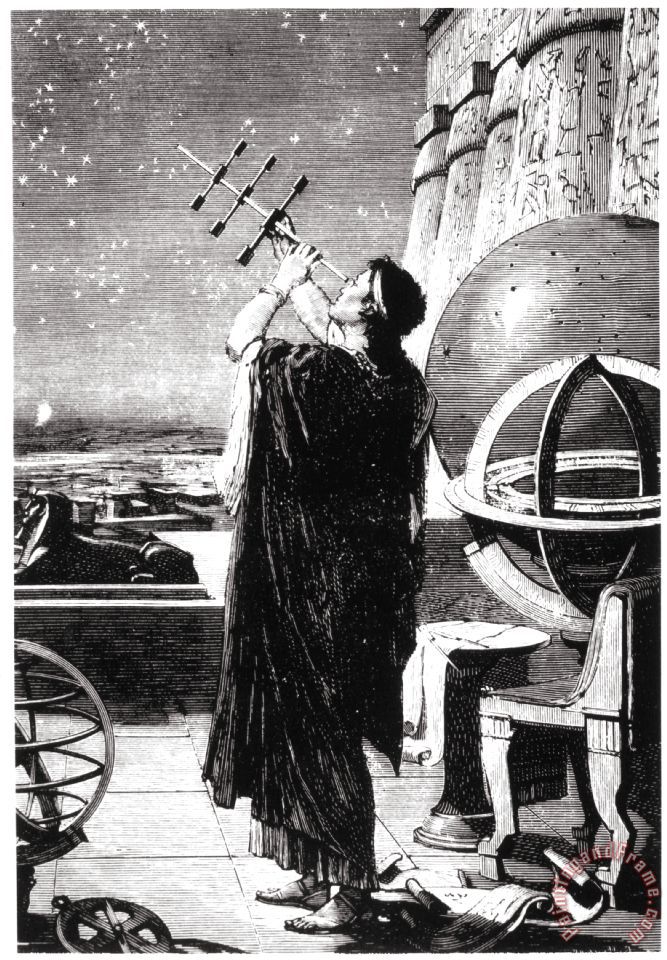
Timocharis of Alexandria

Timocharis of Alexandria (Greek: Τιμόχαρις; c. 320 – 260 BC) was a Greek astronomer and philosopher. Likely born in Alexandria, he was a contemporary of Euclid.
Timocharis is the earliest Greek astronomer who is known to have made and recorded large numbers of scientific observations of the heavenly bodies. No writings by him are extant, and his work has survived chiefly in the form of observations and measurements reported in Ptolemy’s Almagest (second century CE). According to Ptolemy, Hipparchus (second century BCE) also exploited Timocharis’s observations in his investigations of precession.
Among the observations of Timocharis that Hipparchus used in his lost book, On the Displacement of the Solsticial and Equinoctial Points, were lunar eclipses, but Ptolemy does not preserve their dates or any other details. He does, however, cite the reports of four occultations or near passages of fixed stars by the Moon, which Timocharis observed between 295 and 283 BCE in Alexandria. Timocharis recorded not only the dates but the times of night to a precision of about half an hour, as well as which part of the Moon’s rim passed over or closest to the star in question. The dates are expressed in the Callippic calendar, which was a schematic lunisolar calendar counting years in seventy-six-year cycles, and also in the Egyptian calendar. If this was an original feature of the reports, Timocharis was the earliest attested user of the Callippic calendar, which remained in use among astronomers until the first century CE. Ptolemy preserves one other pair of dated observation reports by Timocharis, pertaining to the passage of Venus by a fixed star in 272 BCE. There is no information about the original purpose of any of these observations.
As well as observations of the Moon and planets on specific dates, Timocharis made measurements of the positions of fixed stars, again being the first Greek known to have done so. Ptolemy gives a list of twelve undated declinations of stars attributed to him, together with six more attributed to Aristyllus, whom Ptolemy apparently regarded as Timocharis’s contemporary and associate. As transmitted, the declinations are expressed in degrees and fractions of a degree, and they would be—by more than a century—the earliest instances of degrees in a Greek source if one could be confident that the numbers represented the form in which Timocharis originally reported them. Both Timocharis’s and Aristyllus’s declinations are reasonably accurate, presuming they were observed in the first decades of the third century, but they do not provide an adequate statistical basis for more precise dating.
BIBLIOGRAPHY
Britton, John Phillips. Models and Precision: The Quality of Ptolemy’s Observations and Parameters. New York: Garland, 1992. Astronomical analysis of the observation reports.
Goldstein, Bernard R., and Alan C. Bowen. “On Early Hellenistic Astronomy: Timocharis and the First Callippic Calendar.” Centaurus 32 (1989): 272–293.
———. “The Introduction of Dated Observations and Precise Measurement in Greek Astronomy.” Archive for History of Exact Sciences 43 (1991): 93–132.
Maeyama, Yasukatsu. “Ancient Stellar Observations: Timocharis, Aristyllus, Hipparchus, Ptolemy—the Dates and Accuracies.” Centaurus 27 (1984): 280–310.
Toomer, Gerald J., trans. Ptolemy’s Almagest. Princeton, NJ: Princeton University Press, 1998. Ptolemy’s references to Timocharis are in Book VII, 1–3, and Book X, 4.
[1]
Sources
[1] "Encyclopedia.com" by Alexander Jones
Our Mobile Application
Check out Our Mobile Application "Ancient Greece Reloaded"


